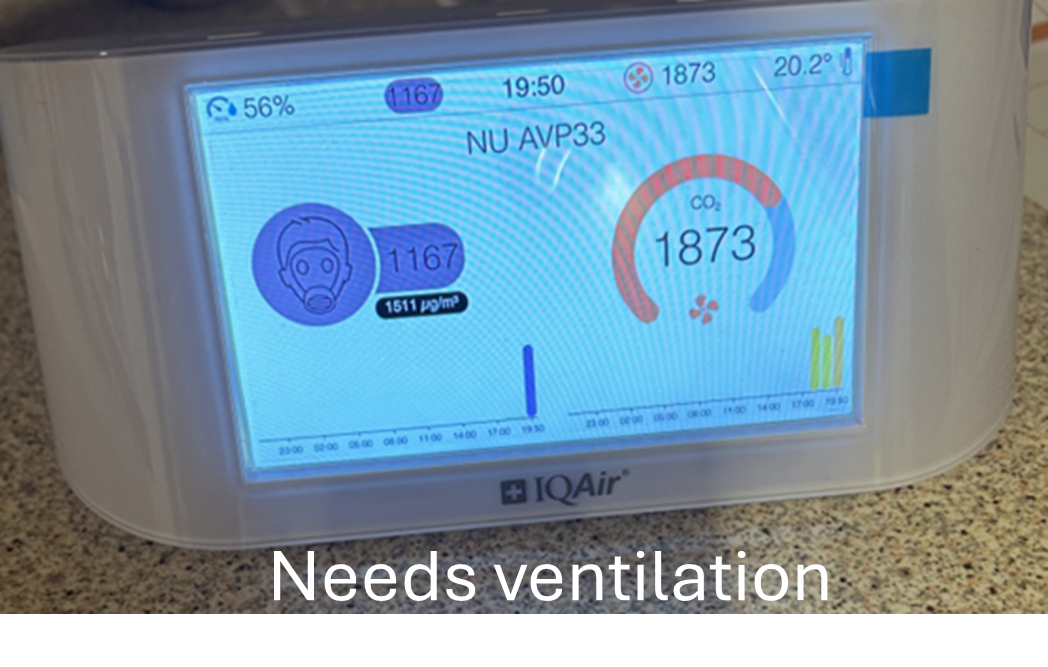Resources
Advice for improving indoor air quality
The following episode of Inside Health from the BBC provides some good advice for improving air quality in your home:
Energy Advice North East offers free personalised support and advice on improving the energy efficiency of your home:
Here are some simple steps you can take to improve air quality in your home from NICE (National Institute for Health and Care Excellence):
Living in a retrofitted home
New windows make homes more energy efficient but can trap moisture inside. This trapped moisture may increase mould and dust mites, while reduced airflow can raise indoor carbon dioxide levels.
To prevent these issues, window vents are installed. Keep these vents open most of the time, closing them only during bad weather or high outdoor pollution. Remember to reopen them afterward.
Protocols
You can download our In2Air Research Protocol document here:
You can download our Retrofitting Participant Information Sheet here:
News Stories
Listen to our interview on the Healthy Homes Hub Podcast
Join three members of our In2Air team as we discuss the In2Air project, Indoor Air Quality and retrofitting homes to become energy efficient. Hosted by Jenny Danson, Co-founder and Chief Executive, Healthy Homes Hub
https://healthyhomeshub.uk/podcasts/in2air-project-retrofit-health-outcome-evidence-model
Sophia, a local student, had a work experience week with us. Here are her thoughts on her time with In2Air
On my week of work experience I took part in the In2Air research project. During my time I was loaned one of the indoor air quality monitors and monitored the quality of air in my kitchen. In order to do this, I kept a time activity diary to measure CO2 and concentrations of particles in the air (PM2.5) during and after certain activities such as cooking. On Shrove Tuesday I found that when frying pancakes, PM2.5 concentrations reached 1511 µg/m3 (very high). Post cooking with a window open, internal door open and kitchen fan on, approximately 3.5 hours later, PM2.5 concentrations dropped to 10.0 µg/m3. This was fascinating as I have now become more aware of certain activities (such as cooking) which can increase the particle levels in a monitored room, increasing air pollution.
I have also observed that at 10:00pm at night CO2 levels were 700 ppm in comparison to 8:00 the next morning where CO2 increased to 1806 ppm (fairly high). This was due to breathing and me being in the room overnight, with no windows open. This project is extremely impactful as by collecting air quality and health and wellbeing information, public health can be improved. Exploring my own concentrations of fine particulate matter and CO2 has led to me becoming more conscious of activities which are common sources of pollutants which negatively impact air quality.
After my week of work experience, I have recognised the importance of indoor air quality within my home. To stop indoor air becoming “stuffy” I have recently been changing my behaviour such as opening more windows. This will increase ventilation and bring in clean, fresh air into rooms which is picked up by the indoor quality air monitor and the concentrations are presented as being green (healthy limits). By using a simple method like opening windows, it is possible to have fantastic indoor air quality. Other strategies include efficient cleaning practices e.g. using a damp cloth to minimise dust. This will reduce PM in the air. Turning on indoor fans also helps reduce PM and CO2 inside by improving ventilation.
As a result of this incredible week, I have learned lots about the importance of research into air quality to improve public health. Research such as In2Air raises awareness and provides evidence for individuals to take action to improve indoor air quality. Ventilation methods and simple monitoring strategies can be easily used in daily home life which drastically improves air quality, therefore improving public health and quality of life for local residents and individuals.
Can energy saving improvements make your home less healthy?
Rising gas and electricity bills have led to many householders trying to make their homes more energy efficient in recent years by adding insulation and sealing windows and doors, but can this have an unintended impact on their health?…….
Work is continuing on Newcastle tower blocks
Progress is being made to ensure hundreds of homes will have insulation improved, new windows, and heating installed.
The works see old gas and electric heating systems being removed from the three tower blocks that dominate the local skyline. Having removed the dated heating systems, each tower will have a new air source heat pump fitted to its roof to supply each flat with its heating and hot water requirements….
https://new.newcastle.gov.uk/news/2024/work-continuing-newcastle-tower-blocks







